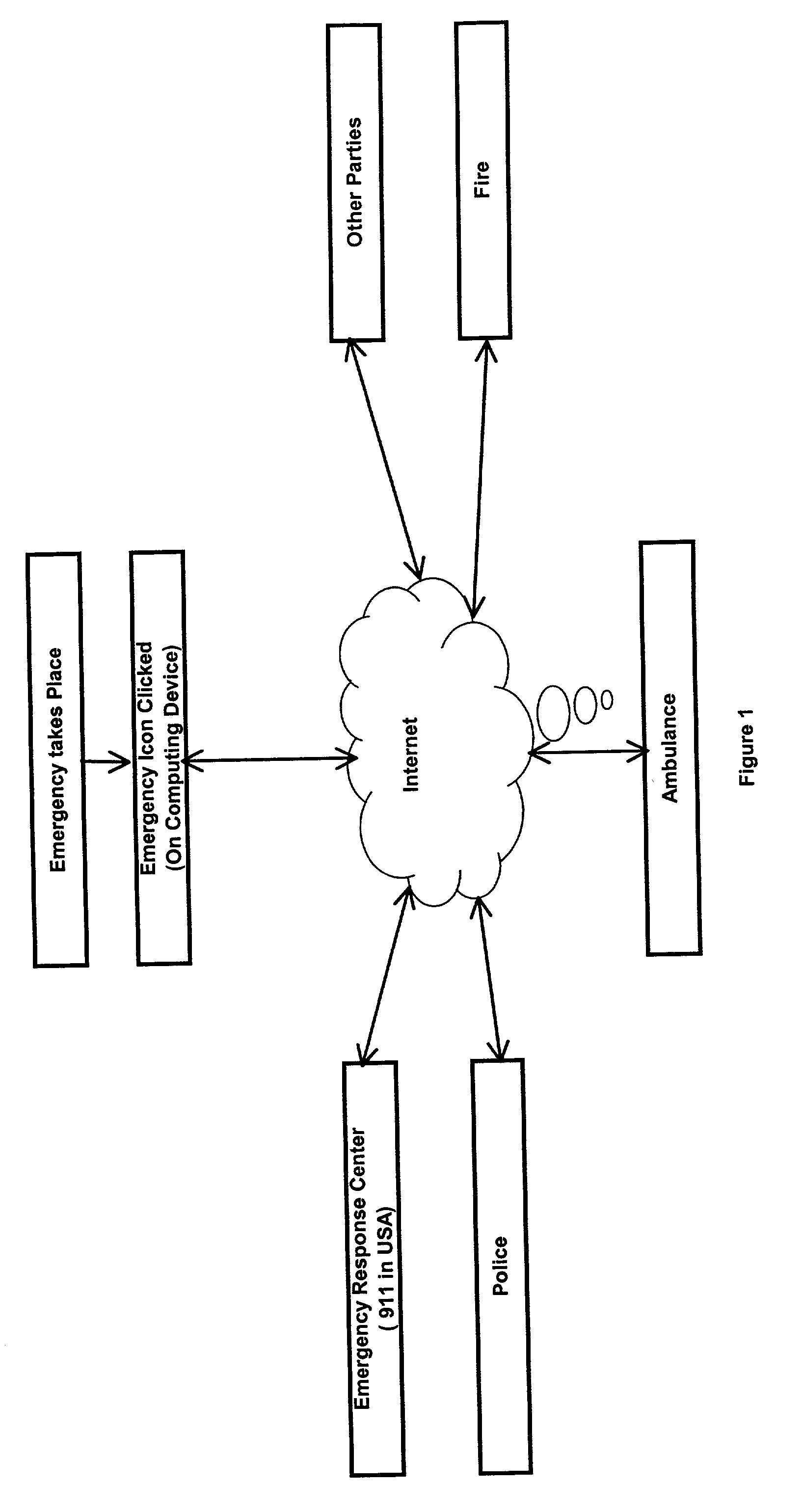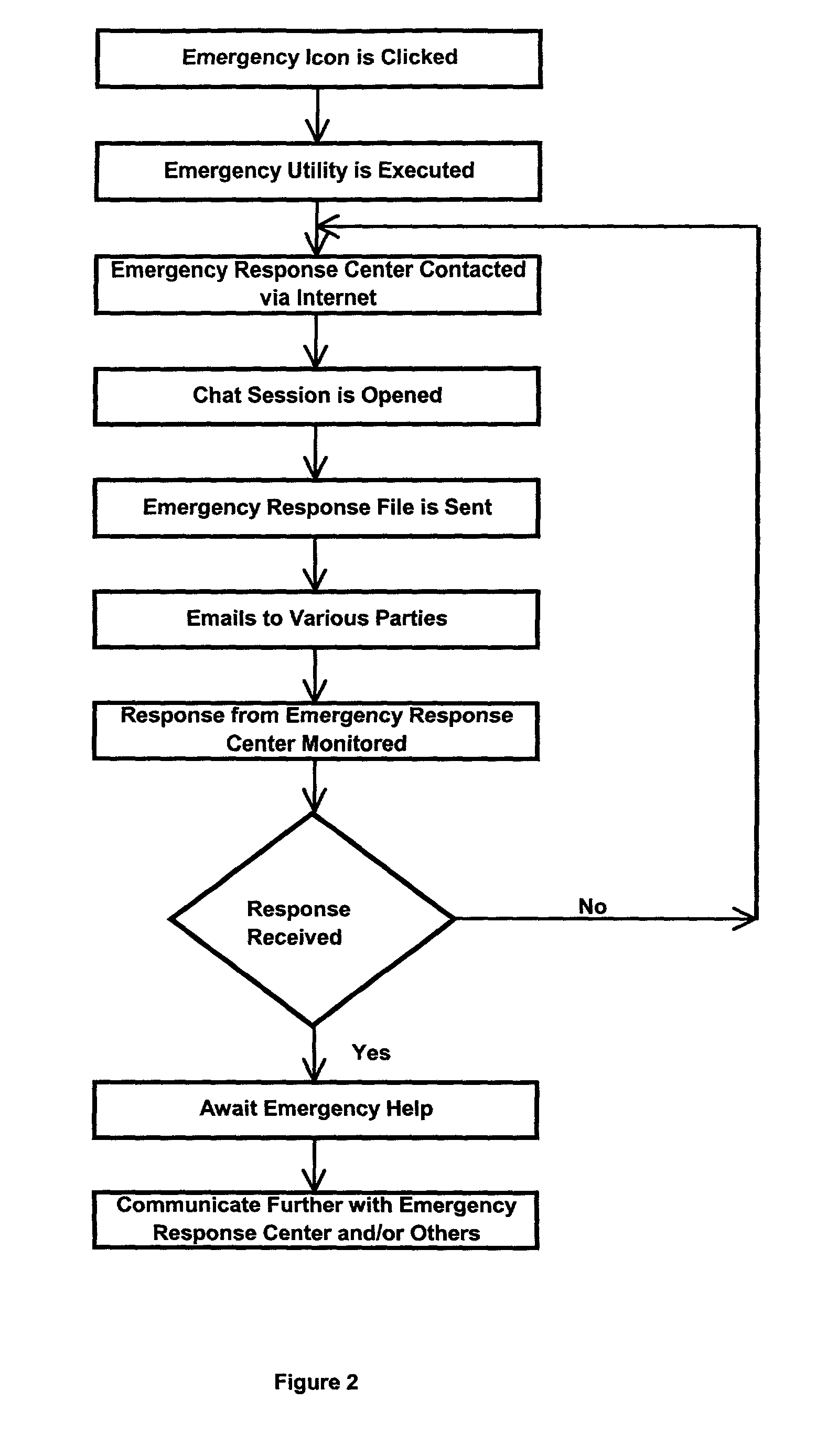System and a method for emergency services
a technology of emergency services and systems, applied in emergency/hazardous communication services, telephonic communication, electrical equipment, etc., can solve problems such as verbal communication, and inability to call for emergency services
- Summary
- Abstract
- Description
- Claims
- Application Information
AI Technical Summary
Benefits of technology
Problems solved by technology
Method used
Image
Examples
Embodiment Construction
[0040] An Emergency Utility is loaded onto a computing device. Many automobiles are equipped with computing devices, for example cellular phones, that are used in cases of accidents, auto-theft or attempt thereof. These devices may be programmed to contain the Emergency Utility or they may remotely execute the utility on a home computer.
[0041] An Emergency Icon is located on the screen or display of the computing device. Clicking the Emergency Icon causes the Emergency Utility to execute. Alternatively, or in addition to Emergency Icons, a keyboard and / or a mouse and / or a monitor and / or other places on the computing device may be provided with a button that can initiate the execution of the Emergency Utility. Preferably, buttons that can initiate the execution of the Emergency Utility on the computing device are placed strategically around the premises (house, workplace). According to a further embodiment of the invention, a button for initiating execution of the Emergency Utility i...
PUM
 Login to View More
Login to View More Abstract
Description
Claims
Application Information
 Login to View More
Login to View More - R&D
- Intellectual Property
- Life Sciences
- Materials
- Tech Scout
- Unparalleled Data Quality
- Higher Quality Content
- 60% Fewer Hallucinations
Browse by: Latest US Patents, China's latest patents, Technical Efficacy Thesaurus, Application Domain, Technology Topic, Popular Technical Reports.
© 2025 PatSnap. All rights reserved.Legal|Privacy policy|Modern Slavery Act Transparency Statement|Sitemap|About US| Contact US: help@patsnap.com



